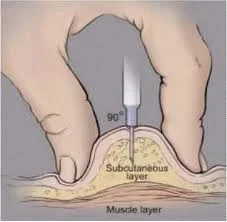Gene Devine
Super Moderator

Here's the only study I found that supports the use of subcutaneous injections of Testosterone.
Subcutaneous administration of testosterone. A pilot study report. - PubMed - NCBI
Subcutaneous administration of testosterone. A pilot study report.
Abstract
OBJECTIVE:
To investigate the effect of low doses of subcutaneous testosterone in hypogonadal men since the intramuscular route, which is the most widely used form of testosterone replacement therapy, is inconvenient to many patients.
METHODS:
All men with primary and secondary hypogonadism attending the reproductive endocrine clinic at Royal Victoria Hospital, Montreal, Quebec, Canada, were invited to participate in the study. Subjects were enrolled from January 2002 till December 2002. Patients were asked to self-administer weekly low doses of testosterone enanthate using 0.5 ml insulin syringe.
RESULTS:
A total of 22 patients were enrolled in the study. The mean trough was 14.48 +/- 3.14 nmol/L and peak total testosterone were 21.65 +/- 7.32 nmol/L. For the free testosterone, the average trough was 59.94 +/- 20.60 pmol/L and the peak was 85.17 +/- 32.88 pmol/L. All of the patients delivered testosterone with ease and no local reactions were reported.
CONCLUSION:
Therapy with weekly subcutaneous testosterone produced serum levels that were within the normal range in 100% of patients for both peak and trough levels. This is the first report, which demonstrated the efficacy of delivering weekly testosterone using this cheap, safe, and less painful subcutaneous route.
Pharmacokinetic Profile of Subcutaneous Testosterone
Last edited by a moderator:












